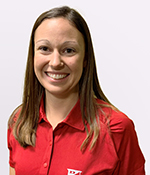Management of Western Bean Cutworm; Corn Silage Harvest Just Around The Corner; Safety With Obstructed Views
BY Dairyland Seed Agronomy Team
SCOUTING FOR WESTERN BEAN CUTWORM
Western Bean Cutworm moth emergence begins in early July and peaks in mid-July. Females will deposit eggs on the uppermost upright leaf of a corn plant either before or right at tassel. Egg masses can range in size from 5 to 200 eggs but generally number around 50 eggs per group. When the eggs are first deposited, they are white in color and turn to tan and then a blue-purple color just before hatch. The total time for hatch is usually 7 to 10 days.

L.J. Capinera. Western Bean Cutworm: Characteristics and Management in Corn and Dry Beans – 5.538.
Areas that have been impacted by Western Bean have a network of pheromone traps, usually through University Extension and local co-operators. As trap numbers begin to increase in your area, scouting is necessary. When scouting for Western Bean Cutworm, select 20 plants from 5 different locations in the field. Examine the upper most, not yet unfurled leaf for egg masses. If 5 percent of plants sampled have egg masses, then control is warranted. Once the eggs hatch, the larvae make their way into the leaf collar and sheath for protection from predators. This hiding also makes them difficult to control with foliar applications, so scouting is crucial to allow for optimal timing of insecticide application.
| Egg Mass Next to a Corn Anther |
Egg mass close to hatch
|
|
 |
 |
|
| J.Obereyer. Western Bean Cutworm. |
https://extension.entm.purdue.edu/fieldcropsipm/insects/western-bean-cutworm.php
The larvae feed on corn pollen, anthers, and leaf tissue all while making their way to their main objective which is the corn ear. Once at the ear, the larvae begin feeding on the developing kernels. This feeding can occur until early October. When mature, the larvae fall to the ground and overwinter in the soil and emerge the following summer. Damage from the feeding can create a vector or entry point for molds and other ear diseases. Losses to feeding and disease have been found to cause up to 30 to 40 percent yield loss.

F.B. Peairs. Western Bean Cutworm: Characteristics and Management in Corn and Dry Beans – 5.538.
Management of Western Bean Cutworm is best achieved when scouting is initiated by pheromone trap reports. If egg masses are found on 5 percent of plants sampled, then an insecticide application is recommended. Corn that contains Acre Max Leptra trait package allows for control of Western Bean Cutworm, but scouting in still recommended to monitor pest pressure. If you have any questions please contact Dairyland DSM or Regional Agronomist for more information.
SILAGE HARVEST PREP
It’s never too early to think about corn silage harvesting, especially when August is right around the corner. Read through this list of ways to prep for this year’s chopping season to maximize both the quantity and quality of your crop.
- Corn silage will hit the half milk-line stage and begin to quickly dry down 45 days after silking/tasseling/pollination. Mark your calendar, get the custom harvester scheduled, or finish up maintenance on your own machinery so you can get in the fields at the right time.
- Shoot for harvesting corn silage at 64% – 68% moisture. Too wet means valuable nutrients will leach out during storage. Too dry will not allow for adequate packing and therefore poor fermentation. Start chopping before you think you need to so that the last few loads are still in the ideal range.
- Be prepared to adjust the cutting height depending on the growing season your area has had. The lower portion of the stalk will have lower fiber digestibility and increase the potential for soil contamination, especially under drought conditions.
- Applying Lactobacillus buchneri-based inoculants boosts aerobic stability. Acetate and propionate inhibit yeast and mold growth which prevent silage from spoiling.
- Lining bunker walls with plastic and overlapping the top layer along with using an oxygen barrier will give your crop excellent protection while also promoting an anaerobic environment for proper fermentation and reduce shrink. Don’t forget to throw lots of tires or weighted rolls along the top!
- When filling bunkers and piles, it’s crucial to spread in thin layers and use the heaviest tractors to promote dense packing.
- Set bags on a concrete or asphalt pad to keep feed-out end clean from possible mud contamination. This will affect both the quality of the silage going to the animals that day and the potential for bacterial contamination of the silage at the opening of the bag.
BE CAUTIOUS OF OBSTRUCTED VIEWS
In areas that have received moisture in adequate amounts, we have crops that are growing rapidly and getting tall -- which is a good thing. The safety issue that arises from our corn, alfalfa or soybeans growing so tall is that they tend to obstruct the view as we are driving and approaching curves or intersections. Because we drive our township roads or prairie trails frequently, we may become used to the crop size and not fully realize how much of our view is really obstructed by our growing crops.
The take home message from this is to remember to slow down and take a little more time as we come up to curves, approaches or intersections. This may also be a good time to remind some of our younger or less seasoned drivers to make a point of slowing down and coming to full stops at intersections due to the height of the crop and how much their view has changed.

SHOW OFF YOUR FIELDS WITH DAIRYLAND SEED FIELD SIGNS
Signing your fields is a great way to promote Dairyland Seed products in your area. Field signs for corn, soybeans and alfalfa can be ordered by calling the Dairyland Seed headquarters at 800-236-0163 and ask to speak with Stacy Hendricks or Rita Frank.
CORTEVA TECHNOLOGY USE AGREEMENTS
All growers with orders for any Corteva Agriscience brand seed product, regardless of crop or trait (including non-GMO products) need to have a signed Corteva Technology Use Agreement in place by September 1. Growers should sign the Corteva Technology Use Agreement electronically at www.agcelerate.com. Signing electronically is preferable, however, paper copies are available at www.traitstewardship.com or by calling Rita Frank in the Dairyland Seed West Bend office at 800-236-0163.
 |
 |
 |
 |
 |
| Brian Weller Western Region 507.456.3034 |
Dan Ritter Central Region 219.863.0583 |
Branden Furseth Northern Region 608.513.4265 |
Mark Gibson Eastern Region 260.330.8968 |
Amanda Goffnett Eastern Region 989.400.3793 |
